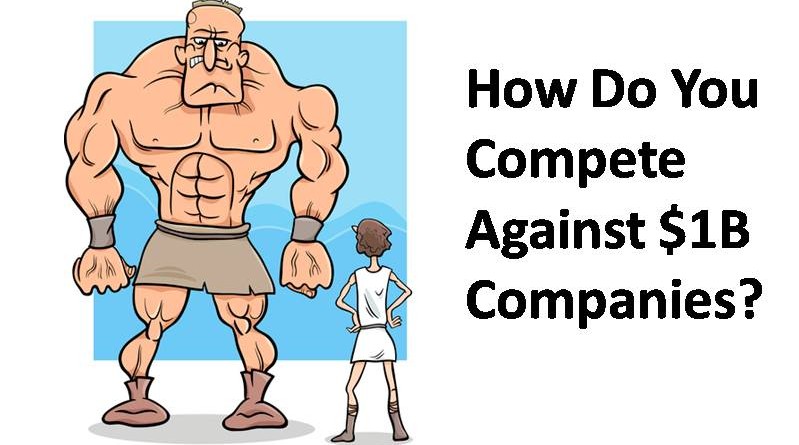How Do You Compete Against $1B Companies? By Brett Fox
I celebrated my birthday two months after I started working at Maxim. My boss, Ziya Boyacigiller, took me out to lunch.
I can’t remember where we went to lunch, but it was probably sushi since Ziya and I liked sushi. However, I do remember the book Ziya gave me for my birthday.
The book was Sun Tzu’s The Art of War. Ziya wrote the following inscription:
“Read this once a year and you won’t have to fight.”
I thought it was an interesting thing for Ziya to write. Then I read the book, and I totally got it. It’s the essence of Sun Tzu’s genius:
Only fight battles that you know you’re going to win.
I took Ziya’s advice, and every year I read The Art of War. The lessons are so appropriate for anyone starting a business, especially the lesson about only fighting battles that you know you will win.
Right when I was starting my company, I had dinner with Ziya. Ziya, ever the professor, recommended I read another book. This time his recommendation was Clayton Christensen’s masterpiece, The Innovator’s Dilemma.
Christensen’s message in The Innovator’s Dilemma is similar to Sun Tzu’s message, or at least that’s how I took it. Christensen writes that a frontal attack on larger, billion dollar, competitors will likely result the startup failing.
Usually, smaller competitors win by targeting new and emerging markets, not an entrenched market owned by a billion dollar competitor.
The reason you’ll lose going head to head trying to steal the larger competitors lunch is obvious. The larger competitor is completely focused on this market, and they will fight tooth and nail to keep their business.
However, when you focus on a market your larger competitor isn’t focused on, or you start focusing on a market that is just emerging, you have a much better chance of winning.
And that’s exactly what we did. We focused on emerging markets that our competitors weren’t as focused on.
We were competing against multi-billion dollar companies such as Analog Devices, Linear Technology, and my old company Maxim. The engineering talent at these companies was unbelievable.
We had no misconceptions about the challenge we faced. It really did come back to a combination of Sun Tzu’s and Clayton Christensen’s wisdom.
Just like Ziya wrote all those years ago, don’t fight battles you don’t know you’ll win.
So we focused on smaller, obscure markets with smaller customers.
And just like Christensen wrote in The Innovator’s Dilemma, our products had benefits that our larger competitors products didn’t have. Our sales grew every quarter:
By not focusing on Apple, Samsung, or any other big customer we carved out a growing segment of the market. However, things sure did seem to change if we went after a big piece of business one of larger competitors already owned.
It became a knife fight.
For example, we did the front end design for a major OEM’s new product. We designed the front end around one of our products.
The product was the first product (of over 70 we would eventually announce) we announced. The product was better than our competitors products, but not that much better.
The first prototype featured our product. We thought we were in. Then, one of our multi-billion dollar competitors found out, and they fought to change the design. We were designed out.
One of board members had a relationship with the CEO of this company, and we got back in the design. Then before the second build we were designed out again.
Back and forth like a ping pong ball, the winner of the design went. Finally on the fifth go around, we lost the design for good.
Only fight battles you know you can win.
Ziya’s words were ringing in my head.
We had fought a battle we weren’t assured of winning. Larger OEMs weren’t just going to buy our product because we were slightly better, we needed to be significantly better.
Each generation of our products kept improving on the previous generation. Eventually our products were truly 10X or more better than anything on the market.
As our market reach improved, we started getting enquiries and orders from Apple, Google, Microsoft, and Samsung. And, in each case, these big OEMs were interested in our products that were 10X or more better.
Now we knew we were going to fight a battle we could win.




